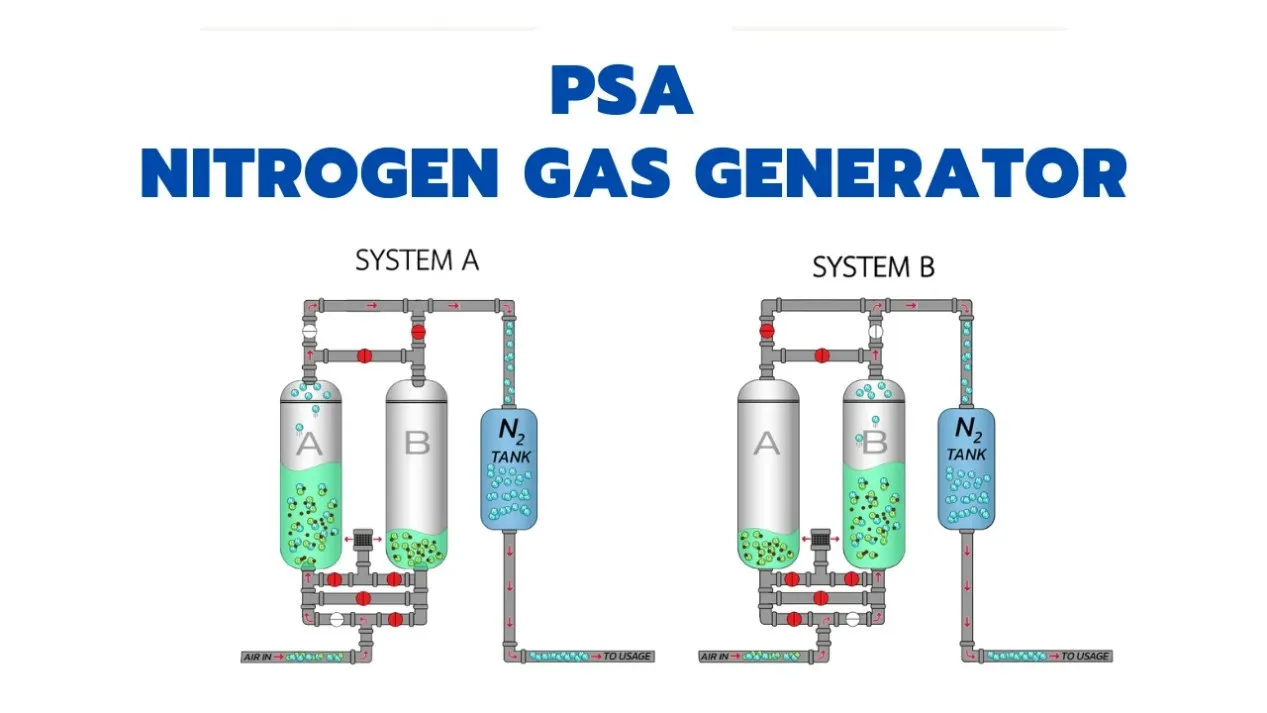Four keys to choose suitable carbon molecular sieve
Time:2025-11-25
Choosing carbon molecular sieves (CMS) is not a one size fits all approach. Wrong selection can lead to low purity, high energy consumption, or shortened lifespan. For nitrogen generators, the most suitable carbon molecular sieve model can be selected through the following four key steps.
Step 1: Clarify the design objective - purity and flow rate of the nitrogen generator
This is the basic selection, and it is necessary to clarify the performance indicators of the equipment:
Target nitrogen purity: The required purity determines the type of carbon molecular sieve.
*N2 purity 98% -99.5%: This is the main battlefield for common CMS, focusing on high recovery rates and cost-effectiveness.
*N2 purity 99.9% -99.999%: High purity CMS needs to be selected. These types of molecular sieves typically sacrifice a portion of the recovery rate in exchange for the ultimate nitrogen purity by optimizing the pore size distribution.
*Rated nitrogen production flow rate: Combined with purity, it determines the filling amount of carbon molecular sieve. We will calculate the minimum required filling amount based on your flow and purity requirements, and reserve a reasonable design margin for you.
Step 2: Evaluate core performance - efficiency and energy consumption
Efficiency is the core of competitiveness while meeting purity requirements.
*Key parameter: Nitrogen Recovery Rate (N ₂ Recovery Rate):
*Meaning: The recovery rate is directly related to the energy consumption of the air compressor. The higher the recovery rate, the less compressed air is consumed to produce nitrogen of the same purity and flow rate.
*How to choose: For standard industrial nitrogen generators that pursue energy-saving selling points, priority should be given to models with higher recovery rates at the target purity.

Step 3: Consider working conditions and lifespan - ensuring stability
Carbon molecular sieves require long-term operation under real and sometimes harsh working conditions.
*Compressive strength and pulverization rate: If the equipment is designed for high pressure or pursues extremely low after-sales maintenance costs, high-strength models must be selected. High strength carbon molecular sieve can effectively resist the impact of PSA cycle, and the annual pulverization rate can be controlled at an extremely low level (such as<1%).
*Hydrophobic and moisture resistant: If the customer's compressed air pretreatment (dryer) may pose risks, or if the equipment is used in high humidity environments, a high hydrophobic model is necessary. It can effectively resist accidental moisture invasion and prevent irreversible performance degradation.
Step 4: Conduct cost balancing - not just unit price
*Initial purchase cost: Unit price of carbon molecular sieve.
*Operating energy consumption cost: determined by the recovery rate, this is the largest long-term cost.
*Maintenance and lifespan costs: determined by strength, hydrophobicity, and service life.
In summary, selecting the appropriate carbon molecular sieve is no longer a challenge. OIM Chemical specializes in adsorbents production such as molecular sieves, activated alumina, and ceramic balls. We welcome new and regular customers to discuss.
Air adsorption dryers are familiar in the chemical industry, and their core components are adsorbents , such as activated alumina, molecular sieves, silica gel. They adsorb water and gas through a porous structure, and their performance affects the drying effect directly. As the adsorption regeneration cycle progresses, the adsorption capacity gradually decreases and needs to be replaced regularly to ensure stable system operation.
The replacement cycle is usually 3-5 years, but it needs to be adjusted based on the following factors:
1. Frequency of use: High frequency use will accelerate the saturation of the adsorbent, and the cycle needs to be shortened; Long term high load operation will accelerate the decline of adsorbent performance;
2. Environmental humidity: The higher the humidity of the inlet air, the greater the adsorption load and the corresponding decrease in lifespan; High temperature, high dust and other harsh environments may require early replacement.
3. Operating parameters: Abnormal pressure or increased dew point temperature may indicate adsorbent failure.
Meanwhile, during work, it is important to pay attention to the following matters:
1. Monitoring indicators: Regularly monitor the dew point temperature at the outlet, and if it continues to exceed the standard, check the status of the adsorbent.
2. Replacement operation: Thoroughly clean the adsorption tower during replacement to avoid mixing of new and old adsorbents; The filling should be evenly compacted to prevent air flow short circuits.
3. Selection matching: The new adsorbent should be consistent with the prototype number to ensure that the porosity and mechanical strength meet the requirements.
4. Regeneration inspection: After replacement, verify the regeneration effect and confirm that the heating temperature and cooling time are normal.

So how to choose the right adsorbent for an adsorption dryer?
1) Molecular sieve: It is a crystal structure with uniform pore size and strong adsorption ability for water molecules, especially suitable for precision industrial scenarios with dew point below -60 ℃. However, due to its low strength, it is easy to be pulverization under high-intensity compressed air impact, so it can only be used in small quantities in traditional twin tower adsorption dryers.
2) Activated alumina: It is a high-strength adsorbent and the most widely used adsorbent in adsorption dryers currently. It can withstand the high-pressure impact of compressed air without powdering. Excellent performance in moderate humidity environments, suitable for places with dew point below -40 ℃, with a regeneration temperature 30-50 ℃ lower than molecular sieves.
3) Silica gel adsorbent: It’s getting less and less in compressed air drying. It is only suitable for drying at room temperature and is used in pressure dew point environments of -20 ℃.
In terms of drying performance, molecular sieves are much stronger than activated alumina, but the replacement cost is higher. Therefore, before choosing which adsorbent, it is necessary to understand the user's requirements or expectations for dew point, so as to choose the best solution that can meet the user's requirements and reduce the cost of use.
